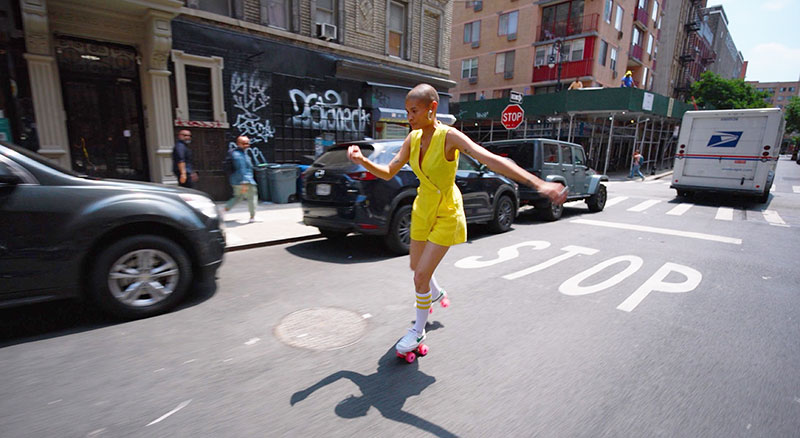Charles Haine completed the fashion campaign’s videos in DaVinci Resolve Studio on Blackmagic Cloud, collaborating with a remote editor and involving the client throughout post.

Ilana Kohn, a clothing and textiles designer and producer in New York City, recently opened up its new main retail shop in Manhattan’s Dimes Square district. To celebrate the launch, along with a new fashion line, the company hired filmmaker Charles Haine to capture the colourful, fun, fast-moving atmosphere of the neighbourhood in the summertime.
The entire process had to be completed in under 48 hours. “The client needed us to turn the project around in time to promote the store opening, and they wanted it to be ‘cool’. We cast Tia to model the clothes, who also happens to be a talented roller skater. We agreed on the idea of capturing the spirit by roller skating around the lower east side,” Charles said.
“In my experience, fashion folks talk in a different language than other types of clients. I always try to find ways of pulling out their ideas and desires in their language. On this one, it was really a conversation about feeling, listening to music tracks together and then trying a bunch of different looks.”
Involving the Client

Charles worked on a DaVinci Resolve Studio system with Blackmagic Cloud, which made it possible to use a particular editor who had experience with fashion projects but is remotely located. Equally important, he was able to involve the client throughout the production and post process.
Charles said, “It's always about the clothes, and fashion clients always see their clothes in more detail than you can. The key is getting them as involved as possible, and showing them as many cuts as possible, so that they have a chance to notice a shot with a weird hemline or a strange fold that you hadn’t noticed earlier on. Every single cut that we went through had a revision on colour to make sure the clothes and the ‘feeling’ looked right, which made the client very happy.”
To do this, Charles’ team took advantage of DaVinci Resolve’s collaboration, which allows each one of a group of artists to work together on the same project, in their own dedicated page with the tools they need. From there, using Blackmagic Cloud, the editors, colourists and finishing artists simultaneously worked together from wherever they were in the world using cloud based workflows. Furthermore, they could review each other's changes without spending time re‑conforming the timeline.
Sharing the Timeline

After setting up a project library for the project on the DaVinci Resolve Project Server, Charles used Blackmagic Cloud to share the timeline across multiple people. When changes were made, he would see and accept them in the viewer – changes are only applied when they have been accepted – which relinks files, updates timelines and allows changes to be viewed. Finally, changes were merged into a master timeline so that the rest of the team could continue with edits.
Charles especially appreciated that he was able to work fluidly with a remote team, since speed was essential. “Since we wouldn't have time to explore colour after the edit was locked, we wanted to be able to explore looks on the footage with every pass on the edit,” he said. “It was actually pretty easy. Between using the chat features, texting and email and Dropbox, it really felt like remote working was finally cracked in a way I've been waiting for. For every cut that was done, the editor would just text me ‘ready to go’ and I would take a look, make a colour grade and we'd send it on to the client for comments together.”
Synchronised Workflow
They made up a workflow that started straight out of production. Following the shoot, dailies were rendered from DaVinci Resolve Studio into a shared folder on Dropbox. The files were then synced with the editor and Charles’ home system. Working in Blackmagic Cloud, the editor would make a cut using 720p ProRes proxies, then Charles would do a colour pass, followed by the client giving suggestions and approvals for both colour and edit at the same time.

He remarked, “I was really excited, not only about being able to work with a remote editor I trusted on Blackmagic Cloud, but also my own workflow across my home and office. I had full resolution 6K files at the office, but I didn't want to drag that hard drive around. With Blackmagic Cloud I could keep the Dropbox proxy files on my laptop at home to review edits and make tweaks. Then when I was back in the office I could finish up and reconnect quickly to the full res files.
“The turnaround time we were handed on this project would've been a nightmare with the old system. Emailing .drp files back and forth and worrying about version control was always such a headache. Blackmagic Cloud letting us keep everything in Dropbox, and then just log in and out, was so slick. It feels like editing should always have been like this.” www.blackmagicdesign.com



